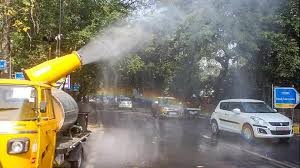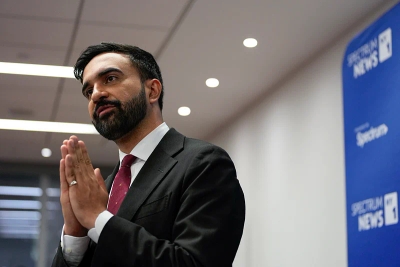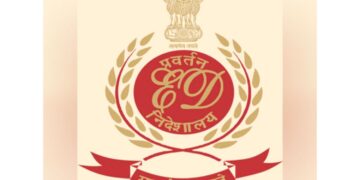Delhi is constantly struggling with excessive air pollution, in the world air quality report released by IQAIR, it has been described as the most polluted capital city in the world. Dangerous consequences of air pollution continue to affect citizens, as the city often found pollution -causing particulate matter (PM) in excessive amounts.
During winter, people of Delhi often wake up with ‘very bad’ or ‘serious’ category air quality, which outlines the immediate need for strong and immediate anti -pollution measures. To make the national capital a healthy, breathable place for citizens, Delhi has recently launched a large-scale campaign to make the entire ring road dusty. Delhi Chief Minister Rekha Gupta has also vowed to implement strict and effective measures to deal with Delhi’s air pollution.
Anti-Smog Gun: Main Points
Delhi’s Environment Minister Manjinder Singh Sirsa on Friday made it mandatory for all tall buildings, non-residential buildings to deal with pollution levels in the national capital in six months. Anti-smog guns spray nebulized water from high places to prevent pollutants present in the air.
According to the official instructions, the number of required anti-mog guns will be determined on the basis of the construction area of the building. Buildings with an area less than 10,000 square meters require at least three anti-somog guns. After this rule, an additional gun is required for every 5,000 square meters beyond 25,000 square meters.
It has been stated that the device should be installed directly on the parapet walls without using mobile trailers and for optimal performance with nozzle capable of spreading water drops in five to 20-mcron range.
The throw distance of the gans is expected to be 75 to 100 meters and they should work intermittently during the maximum pollution hours including the morning, evening and late night. The use of treated water has been made mandatory, and water consumption for each machine should not exceed 10,000 liters in the day of 1,200 liters per hour or eight hours of operation.
Dust free ring road campaign
The Delhi government also launched a comprehensive campaign to make the entire ring road dust free. This comprehensive effort also includes planting trees along the roads and dividers and reducing traffic congestion on about 250 roads.
However, the campaign mainly focuses on mechanized cleaning and use of sprinkler to make the entire ring road dust free. Apart from this, the campaign also plans to deploy sprinkler and smog gun throughout the year except the monsoon season.
Grap: How does it work?
Graded Response Action Plan (GRAP) is an emergency anti-pollution solution that is applied when the air quality deteriorates to a particular point. There are four stages of the plan based on the Air Quality Index (AQI). Step I are then applied when AQI is “bad” (201-300), while phase II is for ‘very poor’ AQI (301-400). Grap phase III is required for AQI of ‘Gambhir’ category (401-450), and phase IV is for ‘Gambhir Plus’ category (AQI> 450).
Group I and II
These two basic stages include water spraying and mechanical/vacuum sweeping on the routes specified every day, as well as coordinating traffic patterns and increasing parking costs to discourage private vehicle traffic. Educating people about how to reduce pollution is an integral part of Grap Phase I and II. Strict rules have also been implemented on the use and operation of diesel gennset (DG set).
Graph III
In this advanced phase, all non-essential mining work, construction and demolition are stopped. All non-electric, non-CNG and non-BS-VI diesel interstate buses have also been banned. Commercial vehicles are not allowed to enter the National Capital Region (NCR), and BS-III gasoline and BS-IV diesel four wheelers will not be allowed to operate. More roads are cleaned by machines, while water spraying also increases. It is advisable to use public transport.
Graft IV
In the final phase, the emphasis is on spraying of water on the routes prescribed every day and mechanical/vacuum sweeping. Coordinating traffic patterns to discourage private vehicle traffic and increase parking costs. People are instructed to use public transport as much as possible and choose a low congested route. The car’s air filter should be replaced regularly. Burning biomass and solid waste should be avoided.






